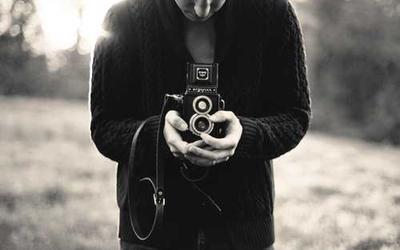🇵🇪 Peru
Peru Travel Guide - Local Insights & Authentic Experiences
2 destinations · Budget level 1
Overview
Peru is the cradle of ancient civilizations where Inca heritage blends with Spanish colonial legacy and indigenous traditions. Peruvian culture centers on 'ayni' (reciprocity), ancestral reverence, and community solidarity. The concept of 'ayllu' (extended family) and 'minga' (collective work) guide social organization. Altitude, pachamama (Mother Earth), and quinoa/potato cultivation shape daily life across three distinct regions: costa, sierra, and selva.
Travel tips
Altitude Preparation: Chew coca leaves, drink mate de coca, ascend gradually - soroche (altitude sickness) is serious above 3000m. Inca Trail Respect: Book months ahead, tip porters generously, respect archaeological sites. Food Adventure: Try cuy (guinea pig) respectfully - it's sacred protein, not tourist gimmick. Indigenous Courtesy: Ask permission before photographing people, learn basic Quechua greetings. Rainy Season Reality: November-March brings heavy rains, muddy trails, but fewer crowds.
Cultural insights
Peruvian society operates on Andean reciprocity principles and extended family networks. 'Compadrazgo' (godparenthood) creates lifelong obligations and support systems. Time moves differently - 'Peruvian time' means flexibility, relationships before schedules. Indigenous communities maintain pre-Columbian traditions while adapting to modern demands. Mestizo identity embraces both Spanish and indigenous heritage. Festivals blend Catholic saints with Andean deities, creating unique religious syncretism.
Best time to visit
Dry Season (May-Sep): Perfect for trekking, clear mountain views, peak tourist season, temperatures vary by altitude. Wet Season (Oct-Apr): Dramatic landscapes, fewer crowds, some trails closed, temperatures 5-25°C depending on elevation. Regional Variations: Coast dry year-round, highlands have distinct wet/dry seasons, Amazon hot and humid always. Festival Times: Inti Raymi (June), Carnival (February), Señor de los Milagros (October) showcase cultural traditions.
Getting around
Buses: Cruz del Sur/Oltursa for long distances, comfortable but long journeys, book executive class for overnight trips. Collectivos: Shared minivans for shorter routes, authentic experience but crowded with luggage/goods. Trains: Limited routes but spectacular - Cusco-Machu Picchu, Cusco-Puno, Huancayo-Huancavelica scenic journeys. Domestic Flights: LAN/Star Peru connect major cities, book early for better prices. Taxis: Negotiate fares beforehand, use Uber in Lima, trust licensed operators for airport transfers.
Budget guidance
Budget Travel (S/80-150/day): Hostels S/25-50, menú del día S/12-25, public buses S/10-30, free museums/markets. Mid-Range (S/150-300/day): Hotels S/80-180, restaurant meals S/30-70, tours S/50-150, domestic flights. Luxury (S/300+/day): Boutique hotels S/200-800+, fine dining S/80-200+, private Inca Trail S/2000+, luxury Amazon lodges. Inca Trail permits S/400-600, Sacred Valley experiences excellent value.
Language
Spanish is official language, with Quechua widely spoken in highlands and Aymara near Lake Titicaca. Essential phrases: 'Napaykullayki' (hello in Quechua), 'Sulpayki' (thank you in Quechua), '¿Habla quechua?' (Do you speak Quechua?). Spanish basics: 'Gracias' (thank you), 'Disculpe' (excuse me), 'Está rico' (it's delicious). Indigenous languages show respect for local culture. English limited outside tourist areas.
Safety
Peru is generally safe but requires street awareness. Altitude sickness is serious - ascend gradually, stay hydrated, seek medical help if severe. Avoid displaying expensive items, use certified tour operators for treks. Don't photograph military installations or indigenous people without permission. Some jungle areas require yellow fever vaccination. Emergency: 105 (police), 116 (fire/medical). Medical facilities good in cities, basic in rural areas.
Money & payments
Peruvian Sol (S/ or PEN) is the currency. US Dollars accepted in tourist areas but soles preferred for better rates. ATMs widely available in cities, limited in remote areas - bring cash. Typical costs: Menú del día S/12-20, Inca Kola S/3-5, Bus ride S/1-3, Hostal S/25-50/night, Inca Trail permit S/400+. Tipping: 10% restaurants, S/10-20 porters per day, S/5-10 guides per person per day.
Destinations in Peru
 Peru
Peru Cusco, South America
Cusco: Where Inca Stones Meet Living Quechua Culture
Altitude Shock Reality: 3,400m elevation hits visitors hard, locals chew coca leaves daily and have enlarged lung capacity from birth. Inca Stone Foundations…
 Peru
Peru Lima, South America
Lima: Where Ancient Meets Modern Peru
Gray Sky Syndrome: Overcast 8 months yearly, locals call it 'eternal winter' despite no rain. Ceviche Time Rules: Only eaten at lunch, never dinner - locals …